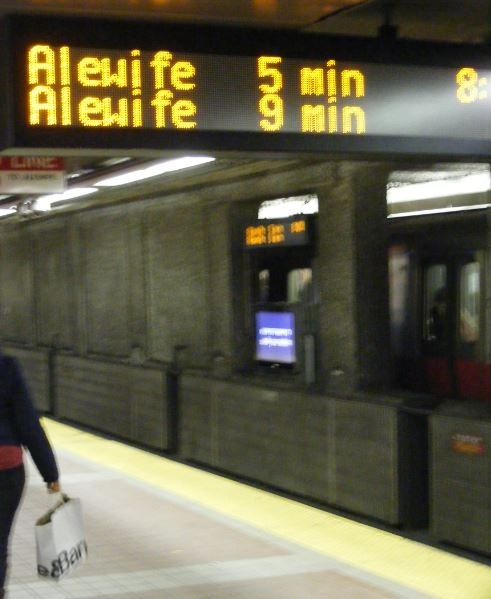
Uploaded on 2014-12-07 by EdxEric
Dependence on infrastructure is evident in this photo. This is one of the primary high speed subway lines in Boston. It serves the City from Cambridge to the North and Quincy to the South and connects the regional and intercity rail lines at South Station. The line serves high tech innovation districts, pharmaceutical research businesses, Mass General hospital and Government Center. It makes direct connections to Tufts, Harvard, MIT, U. Mass (Harbor), and other important universities and colleges. A recent improvement in the Boston transit system are the electronic signs announcing train arrival times. These are long overdue. The video advertising displays are also recent. First proposed and partially implemented in the mid 1990's they were an under-used failure at first. All stations have video surveillance. The television news is happy to use the pictures of accidents and misbehavior in the stations. Wireless phone service was finally extended throughout the underground system in 2012. The Line is closed for a few hours in the early morning when maintenance tasks are typically performed. Signaling systems are critical to operational efficiency. Rush hour demand is heavy and trains must run close together. Small mechanical failures, medical emergencies, or other events can cause big delays up and down the line. There are challenges to meet growing service demand in the future. There is also a very serious concern about protecting the system from major storm events and flooding. Boston is one of the top 10 most at-risk cities in the world from sea level rise and climate change related events. http://www.bizjournals.com/boston/blog/mass_roundup/2013/08/verizon-to-extend-mbta-wireless.html [1]: https://edxuploads.s3.amazonaws.com/14179371552551827.jpg